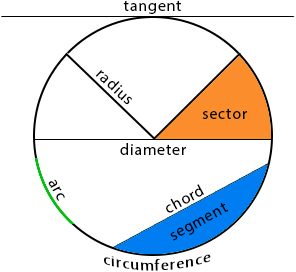PLANE SHAPES
CONTENT
- Identification of Plane Shapes
- Properties of Circles and Triangles
- Properties of Quadrilaterals: Square, Rectangle, Trapezium, Rhombus, Parallelogram, and Kite
- Identification and Naming of Polygons
- Similarities and Differences between Regular Quadrilaterals
Identification of Plane Shapes
A flat surface, such as top of a table, a playing field, ceiling, wall, face of a tin and star board face is referred to as a plane. It is a plane because it is two dimensional, i.e. it is measured in only two directions.
Figures drawn on flat or plane surfaces are called plane shapes. Examples include rectangle, square, triangle, parallelogram and trapezium.
All these shapes are referred to as a regular shape, i.e. they have definite length and breadth.
There are also irregular shapes (they do not have definite length and breadth), e.g. leaves, stones, etc.
Circle
The shape traced out in which every point of it is same distance from a fixed centre point is called circle.

The outer boundary of the circle is called the circumference.
You are viewing an excerpt of this lesson. Subscribing to the subject will give you access to the following:
- NEW: Download the entire term's content in MS Word document format (1-year plan only)
- The complete lesson note and evaluation questions for this topic
- The complete lessons for the subject and class (First Term, Second Term & Third Term)
- Media-rich, interactive and gamified content
- End-of-lesson objective questions with detailed explanations to force mastery of content
- Simulated termly preparatory examination questions
- Discussion boards on all lessons and subjects
- Guaranteed learning